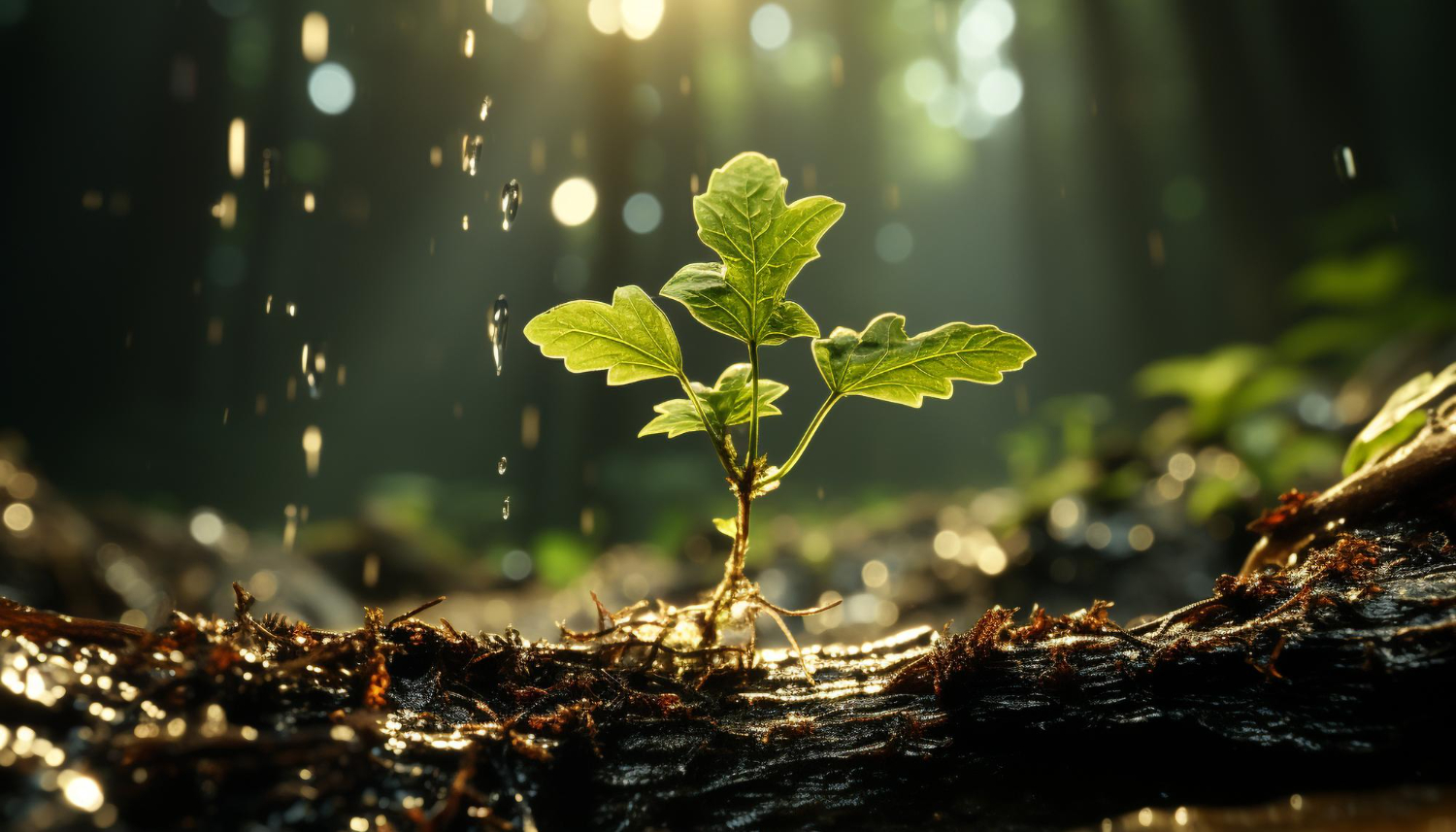COMMON TREE HAZARDS AND HOW TO ADDRESS THEM
Trees are not only a vital part of our environment but also play a crucial role in enhancing the aesthetics of our surroundings. Proper tree care and safety are essential for several reasons:

1. Ecological Balance: Trees are an integral component of ecosystems, providing habitats for various species, supporting biodiversity, and contributing to the overall health of the environment. By ensuring the health and safety of trees, we maintain a balanced ecosystem.
2. Air Quality: Trees absorb carbon dioxide and release oxygen through the process of photosynthesis. This helps improve the quality of the air we breathe by reducing harmful pollutants and greenhouse gases, mitigating the effects of climate change.
3. Shade and Cooling: Trees provide shade that cools the surrounding environment, reducing the urban heat island effect. This is especially important in urban areas, where pavement and buildings can trap heat and lead to higher temperatures.
4. Erosion Control: The roots of trees help stabilize soil and prevent erosion, especially on slopes and along water bodies. This is crucial for maintaining healthy soil and preventing sediment runoff into waterways.
5. Property Value: Well-maintained trees can significantly increase property values. Trees enhance curb appeal, creating an attractive and inviting atmosphere that appeals to potential buyers and renters.
6. Aesthetics and Landscape: Trees add beauty and character to landscapes, parks, streets, and public spaces. Properly maintained trees contribute to a pleasing environment for both residents and visitors.
7. Safety: Neglected or hazardous trees can pose serious risks to people, property, and utility infrastructure. Dead branches or unstable trees can fall, causing injuries, damage, and even fatalities. Regular tree care helps identify and address potential hazards, ensuring public safety.
8. Preventive Maintenance: Regular tree care can prevent potential problems from escalating. Pruning, pest management, and disease control can prevent the need for drastic interventions or removals.
9. Wildlife Habitat: Trees provide nesting sites and food sources for numerous bird, insect, and mammal species. By caring for trees, we contribute to the preservation of local wildlife.
10. Heritage and Cultural Value: Many trees hold cultural significance, serving as landmarks, memorials, or symbols of historical events. Preserving these trees contributes to our shared heritage and cultural identity.
11. Personal Health and Well-being: Being around trees has been linked to improved mental health and reduced stress. Access to green spaces with trees provides opportunities for relaxation and recreation.
In conclusion, tree care and safety are not just matters of aesthetics; they have far-reaching ecological, economic, and societal impacts. By actively maintaining and protecting trees, we can create a healthier and more sustainable environment for current and future generations.
Trees are wonderful assets to our environment, but they can also pose various hazards if not properly managed and maintained. Here are some of the common tree hazards you should be aware of:

• Signs: Dead branches may have no leaves, bark falling off, or brittle and discolored foliage.
• Hazard: Dead branches can fall unexpectedly, posing risks to people, property, and vehicles.
• Addressing: Regular tree inspections by professionals, pruning to remove dead branches, and improving tree health through proper care.
2. Leaning Trees:
• Causes: Soil erosion, root damage, or high winds can cause trees to lean.
• Hazard: Leaning trees can topple over during storms or strong winds, causing damage or injury.
• Addressing: Assess the tree’s stability, consider cabling or bracing for support, and if necessary, remove the tree under expert guidance.
3. Cracks and Splits:
• Causes: Rapid growth, storms, or disease can lead to cracks and splits in tree trunks or branches.
• Hazard: Cracks weaken the tree’s structure, making it susceptible to breaking.
• Addressing: Evaluate the severity of cracks, provide proper support using cables and braces, and consult an arborist for expert advice.
4. Root Problems:
• Types: Girdling roots, root rot, and compacted soil can lead to poor root health.
• Hazard: Unhealthy roots result in unstable trees prone to falling over.
• Addressing: Regularly inspect root systems, address girdling roots during planting, and ensure proper soil aeration and drainage.
5. Overgrown Branches near Structures:
• Risks: Overgrown branches can damage buildings, power lines, and other structures.
• Hazard: Falling branches can lead to property damage and disrupt utility services.
• Addressing: Prune branches for clearance, perform regular maintenance to prevent regrowth, and consult experts for safe removal near utility lines.
6. Poor Pruning Practices:
• Issue: Incorrect pruning can create weak branch unions, inviting decay and instability.
• Hazard: Poorly pruned trees are more likely to suffer from broken branches.
• Addressing: Learn proper pruning techniques, avoid topping, and consult arborists for major pruning.
7. Insect and Disease Infestations:
• Problem: Insects and diseases can weaken trees and make them more susceptible to hazards.
• Hazard: Infested trees may have weakened limbs or die, increasing the risk of falling branches.
• Addressing: Regularly monitor for signs of infestations, apply appropriate treatments, and seek professional advice for severe cases.
8. Improper Planting and Site Selection:
• Concerns: Poor planting techniques and choosing inappropriate tree species can lead to weak growth and instability.
• Hazard: Improperly planted trees are more likely to lean, break, or become hazards.
• Addressing: Choose suitable tree species, plant following recommended practices, and ensure proper spacing and soil conditions.
Understanding and addressing these common tree hazards is essential for maintaining a safe and healthy environment. Regular inspections, proper care, and professional consultation when needed will help mitigate these risks and ensure the longevity of trees while safeguarding people and property.
Factors Leading to Tree Cracks and Splits
Tree cracks and splits can weaken the structural integrity of trees, making them more susceptible to breakage and posing risks to people and property. Several factors contribute to the development of cracks and splits in trees:
1. Rapid Growth: Trees that experience rapid growth due to favorable conditions can develop internal stress within their wood. This stress can lead to the formation of cracks as the wood expands and contracts unevenly.
2. Weather Conditions: Extreme weather events such as heavy winds, ice storms, and sudden temperature fluctuations can exert significant stress on tree trunks and branches. This stress can cause the wood to split, especially if the tree is already compromised.
3. Mechanical Damage: Physical injuries from lawnmowers, vehicles, construction equipment, or improper pruning can create wounds that weaken the tree’s structure. These wounds can become entry points for pests and diseases, increasing the likelihood of cracks.
4. Improper Pruning: Incorrect pruning techniques, such as making improper cuts or removing large branches incorrectly, can create wounds that don’t heal properly. These wounds weaken the tree and increase the risk of cracks.
5. Disease and Decay: Trees affected by diseases or decay often have compromised wood that is weaker and more prone to cracking. Fungi and other pathogens can weaken the internal structure of the wood, making it more susceptible to stress.
6. Unfavorable Growing Conditions: Trees growing in compacted or poorly-drained soil, or those planted too close to structures, may experience root problems. Unhealthy roots can impact the stability of the tree, making it more prone to cracks.
7. Co-Dominant Stems: Trees with multiple main stems (co-dominant stems) competing for dominance can develop weak branch unions. These unions are prone to cracking due to the unequal distribution of stress.
8. Age: Older trees may develop cracks and splits as a natural part of their aging process. Over time, the wood becomes less flexible and more prone to stress-related damage.
9. Species Vulnerability: Some tree species are more prone to developing cracks and splits due to the nature of their wood or growth patterns. Brittle or fast-growing species can be more susceptible.
10. Previous Damage: Trees that have experienced previous injuries, diseases, or pest infestations are often weakened, making them more prone to cracks and splits.
• Regular Inspection: Regularly inspect trees for signs of stress, damage, or disease. Early detection can help prevent the development of serious cracks.
• Proper Pruning: Follow proper pruning practices to avoid creating weak branch unions and improper wounds.
• Healthy Soil and Watering: Maintain healthy soil and provide adequate water to promote strong root systems and overall tree health.
• Support Systems: For valuable trees with weak unions, consider installing support systems like cabling or bracing to prevent further splitting.
• Consult a Professional: If you notice cracks forming or have concerns about the structural integrity of a tree, consult a certified arborist. They can assess the situation and recommend appropriate actions.
Addressing factors that contribute to cracks and splits is crucial for maintaining the safety and health of trees in your environment. By taking preventive measures and seeking professional guidance, you can help ensure the longevity of trees while minimizing risks.
[geocentric_weather id=”45ff4ccd-3d3f-498e-b0b9-91aaaf766bc4″]
[geocentric_about id=”45ff4ccd-3d3f-498e-b0b9-91aaaf766bc4″]
[geocentric_neighborhoods id=”45ff4ccd-3d3f-498e-b0b9-91aaaf766bc4″]
[geocentric_thingstodo id=”45ff4ccd-3d3f-498e-b0b9-91aaaf766bc4″]
[geocentric_busstops id=”45ff4ccd-3d3f-498e-b0b9-91aaaf766bc4″]
[geocentric_mapembed id=”45ff4ccd-3d3f-498e-b0b9-91aaaf766bc4″]
[geocentric_drivingdirections id=”45ff4ccd-3d3f-498e-b0b9-91aaaf766bc4″]
[geocentric_reviews id=”45ff4ccd-3d3f-498e-b0b9-91aaaf766bc4″]